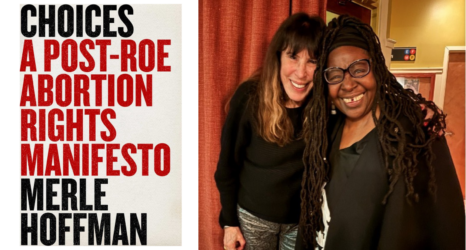Less than a month after women around the U.S.—and the world—once again took to the streets for women’s rights, the marches are far from over. On Valentine’s Day, activists in Fargo, Minneapolis, Vancouver, Rapid City, S.D., Toronto and Seattle organized marches and vigils for missing and murdered indigenous women—wearing red in unity as they raised awareness for victims of violence who are too often forgotten or ignored.
TOMORROW: The women’s memorial march continues to honour the lives of missing and murdered women and all women’s lives lost in the #DTES. Please join us. https://t.co/f3dnccwJRn #MMIWG #MMIW pic.twitter.com/iPUzXr7nEd
— BC Health Coalition (@BCHC) February 13, 2018
In the Downtown Eastside of Vancouver, marches of this kind—dubbed the “Women’s Memorial March”—have been held on February 14th since 1992, when a Coast Salish woman was murdered on Powell Street. The annual date of the march, Valentine’s Day, was chosen as a symbol of love.
Indigenous women and girls face violence at staggeringly high rates. 84.3 percent of American Indian and Alaska Native women have experienced violence in their lifetime. 56.1 percent of them have been raped or sexually assaulted. 55.5 percent have experienced physical violence by an intimate partner, and 66.4 percent have experience psychological aggression from one. 48.8 percent have been stalked.
Reporting and convicting these abuses is difficult, though. In the 1978 U.S. Supreme Court case Oliphant v. Suquamish Indian Tribe, the court determined that tribal courts do not possess an inherent criminal jurisdiction over non-indigenous peoples, and therefore may not try or punish them without authorization from Congress. As the National Institute of Justice points out: “This essentially provided immunity to non-Indian offenders and compromised the safety of American Indian and Alaska Native women and men.” While the Violence Against Women Reauthorization Act of 2013 corrected parts of the jurisdiction problems, namely by giving tribes jurisdiction over “domestic violence, dating violence and violations of protective orders that occur on their lands,” the violence has persisted.
Earth-Feather Sovereign, a woman involved with this year’s candlelight vigil in Seattle as well as the 2012 Idle No More movement in Canada, told Teen Vogue that it was her mother who informed her about the nuances surrounding these issues. “She told me how hard it was to convict nontribal members of a crime on reservation lands,” she explained, “and how women end up domestically abused, murdered or missing, and law enforcement from all jurisdictions do little or nothing about it. There is confusion on who has jurisdiction and the resources available to investigate.”
One week after the marches in Canada and the U.S., activists once again took to the streets when a jury found the accused murderer of indigenous 15-year-old Tina Fontaine not guilty. Her body, wrapped in a blanket, surfaced in the Red River in 2014. Her accused killed, Raymond Cormier, had admitted to having a sexual relationship with her and was once overheard saying “that he bet Tina was killed because he found out she was only 15.”
A little boy at the Walk in Honour of Tina Fontaine event today. #No more #MMIW” #cdnpoli #mb pic.twitter.com/I7tFICxY0Y
— Martha Troian (@ozhibiiige) February 23, 2018
Currently, there is no centralized database of information on missing and murdered indigenous women, which makes uniformly tracking the epidemic particularly difficult. The Canadian Government has launched investigations into the issue, including the 2016 National Inquiry into Missing and Murdered Indigenous Women and Girls. In 2017, Sen. Heidi Heitkamp (D-North Dakota) introduced Savanna’s Act—legislation that would “require an annual report to Congress with data” about missing and murdered indigenous women and “create standardized protocols for responding to cases of missing and murdered Native Americans.” It has not yet been passed.
Consequently, marches and vigils like those that took place this month serve as one of the few wide-scale reminders of the problem. “There are amazing people out there that sincerely want to help us, and there’s no way to know who those people are if we don’t share our need for support,” Sunny Red Bear, a Lakota activist who helped coordinate the march in Rapid City this year, told Teen Vogue. “We have many things working against us but if we are able to come together with like-minded people who want justice for our women, we can make things happen.”
When Myrna Cranmer, a longstanding member of the Downtown Eastside Women’s Memorial March committee in Vancouver, and her colleagues Carole Martin and Mabel Nipshank were asked why they remain so committed to organizing the march, they had an easy answer: “It’s the women.”
“These women are young, and it’s so important that we keep marching, and remembering their names,” Cranmer told The Georgia Straight. “It’s important that we know their names—because you know what? A lot of them were just ignored to death… There’s no way we can change what’s happened, and that’s why we keep marching.”
Natasha Piñon is an Editorial Intern at Ms. and a junior at the University of Southern California, where she studies political science and journalism. She also writes for The Daily Trojan.





